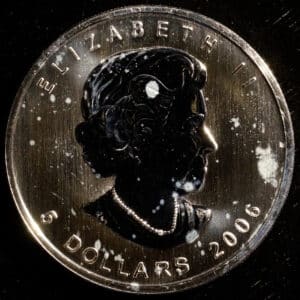
The Best Time to Buy Silver: 5 Indicators You Can’t Afford to Miss
Investing in silver coins is not a game of chance but a strategic endeavor that requires understanding of market trends and economic indicators. A common belief among seasoned investors is that there are certain market indicators that can hint at the best time to buy silver. Furthermore, the market often exhibits a “sideways” pattern with low volatility during the summer months, which could be an opportune moment to invest. In this comprehensive guide, we’ll delve into the top five market indicators and analyze how the summer months can affect your silver coin investment strategy.
Indicator 1: Gold-Silver Ratio
The Gold-Silver Ratio is a critical tool used by investors to evaluate the relative value of these two precious metals. The ratio is simply the price of gold divided by the price of silver. If the ratio is high, it could indicate that silver is undervalued relative to gold and vice versa.
Historically, a high Gold-Silver Ratio has been seen as a buy signal for silver. For instance, a ratio of 80:1 means it takes 80 ounces of silver to buy one ounce of gold. If the ratio drops to 60:1, the value of silver has increased compared to gold.
However, this indicator shouldn’t be used in isolation. Combining it with other market indicators can provide a more holistic view of the market and guide your investment decisions more effectively.
Indicator 2: Relative Strength Index (RSI) Precious Metal Prices
The Relative Strength Index (RSI) is a momentum oscillator used in technical analysis to measure the speed and change of price movements. It scales from 0 to 100, with a low RSI (typically below 30) suggesting that an asset might be oversold and due for a price correction.
In the context of silver investing, a low RSI might indicate a potential buying opportunity. However, as with the Gold-Silver Ratio, the RSI should be used in conjunction with other indicators for a more comprehensive market analysis.
Indicator 3: Seasonal Patterns and Summers Affecting the Price of Silver
Seasonal patterns can also play a significant role in silver prices. Historically, silver prices have shown a tendency to stagnate or decline during the summer months (June, July, and August), creating a “sideways” market with low volatility. Reasons for this trend could range from decreased trading activity during vacation months to other sector-specific factors.
These low-volatility periods might offer lucrative opportunities to buy silver coins at lower prices before the market activity picks up again.
Summer months tend to offer periods of low volatility that allow for great buying opportunities. After an extremely volatile spring 2023, with several large bank failures and a lot of economic uncertainty, the market has had a chance to settle down. The “Silver Premium” which is the cost to acquire an ounce of gold or silver over the spot price, has come way down.
Silver Eagles are finally affordable. The popular U.S. Minted silver bullion coins were fetching prices into the mid $40-$45 dollar range just a couple of months ago. As of today Investors and collectors are now able to purchase them for under $30 from some reputable dealers like FMR Gold.
Indicator 4: Central Bank Policies
Central bank policies have a profound influence on precious metal prices. For instance, changes in interest rates or shifts in monetary policy can either stimulate or curb investment in silver.
When central banks increase interest rates, it often leads to a stronger currency but weaker demand for precious metals like silver. Conversely, when interest rates are low, and there’s a lot of money flowing in the economy, silver prices can rise due to increased investor demand.
Thus, staying abreast of central bank decisions can provide valuable insights into potential price movements in the silver market.
Interest rates have remained over 5.00% for nearly all of 2023, the highest they have been in many years. There are expectations that the July .25% rate hike could be the last one. Expect precious metal prices to start to to rise if this is true. As a rule, a weak dollar typically equals higher gold and silver spot prices.
Indicator 5: Global Economic Uncertainty
Lastly, global economic uncertainty often leads to increased demand for safe-haven assets like silver. Geopolitical tensions, economic downturns, and financial crises can all drive investors towards precious metals as they seek to safeguard their wealth.
Keeping an eye on global economic indicators can therefore provide valuable signals about when to increase your silver holdings.
Conclusion
Timing your investment in silver coins requires a keen understanding of various market indicators. The Gold-Silver Ratio, Relative Strength Index (RSI), seasonal patterns, central bank policies, and global economic uncertainty all play a significant role in this assessment.
While the summer months can often offer lower volatility and potentially lower prices, it’s crucial to stay informed and conduct thorough research before making your move.
By adopting a diversified approach and considering these indicators, you can strategically time your silver coin investment to maximize your returns. Always remember, investing in silver is not a short-term gamble but a long-term wealth creation strategy.
For more insight into precious metals please check out FMR Gold’s Newsletter or feel free to contact a representative














